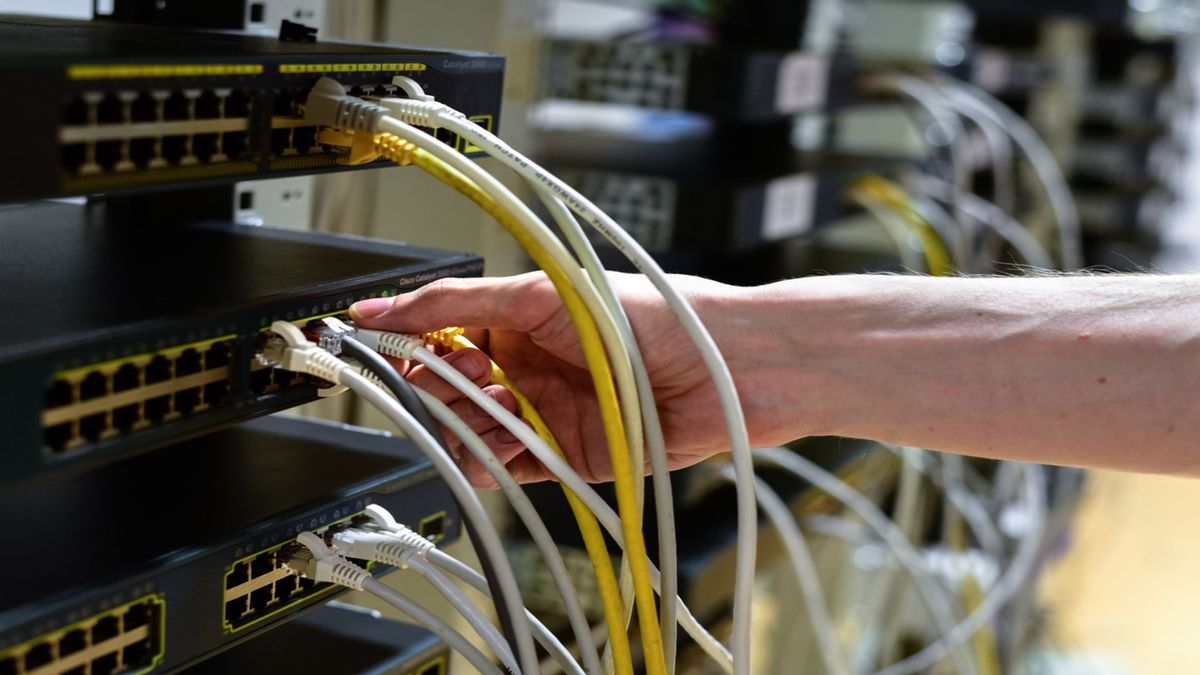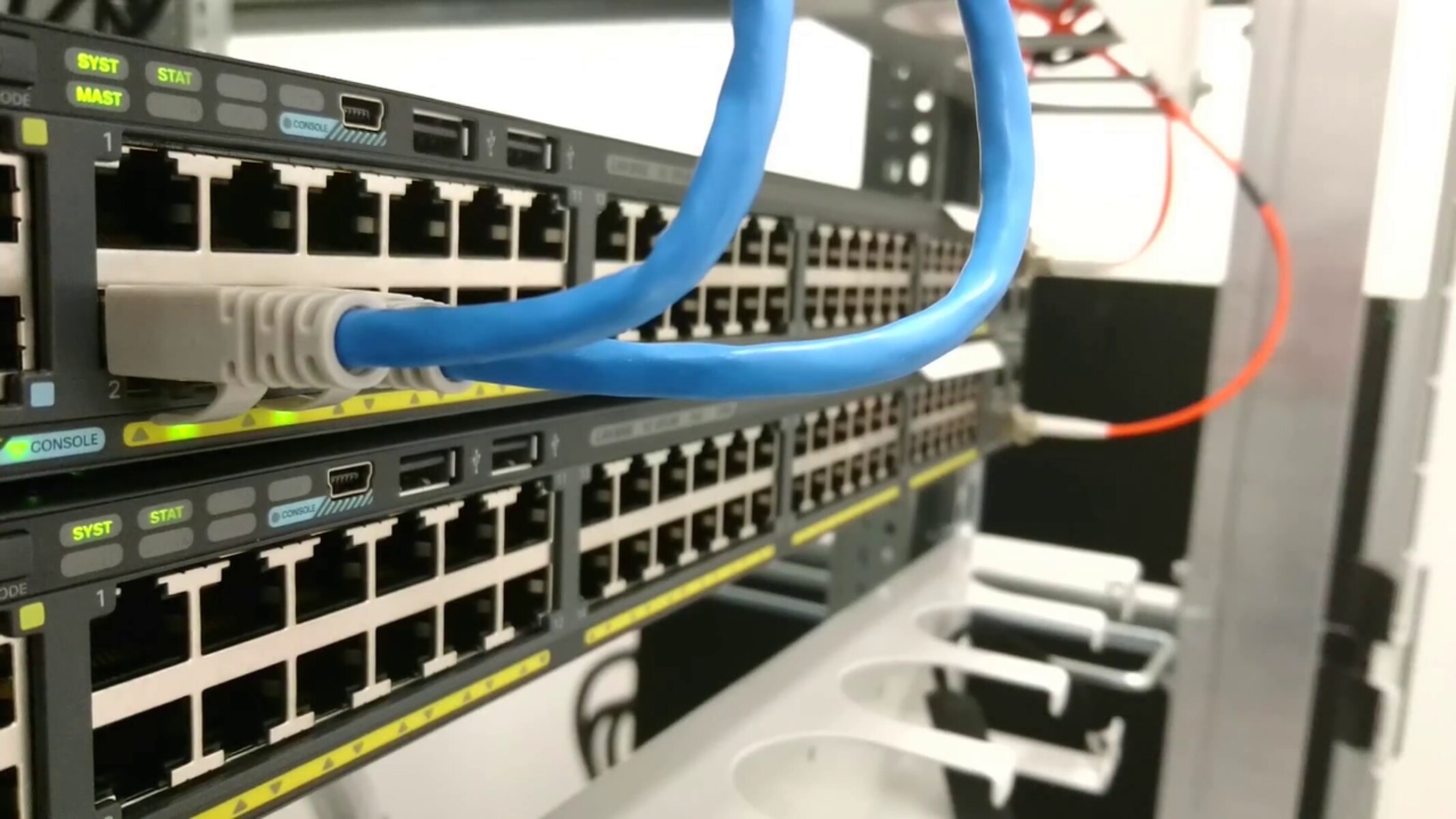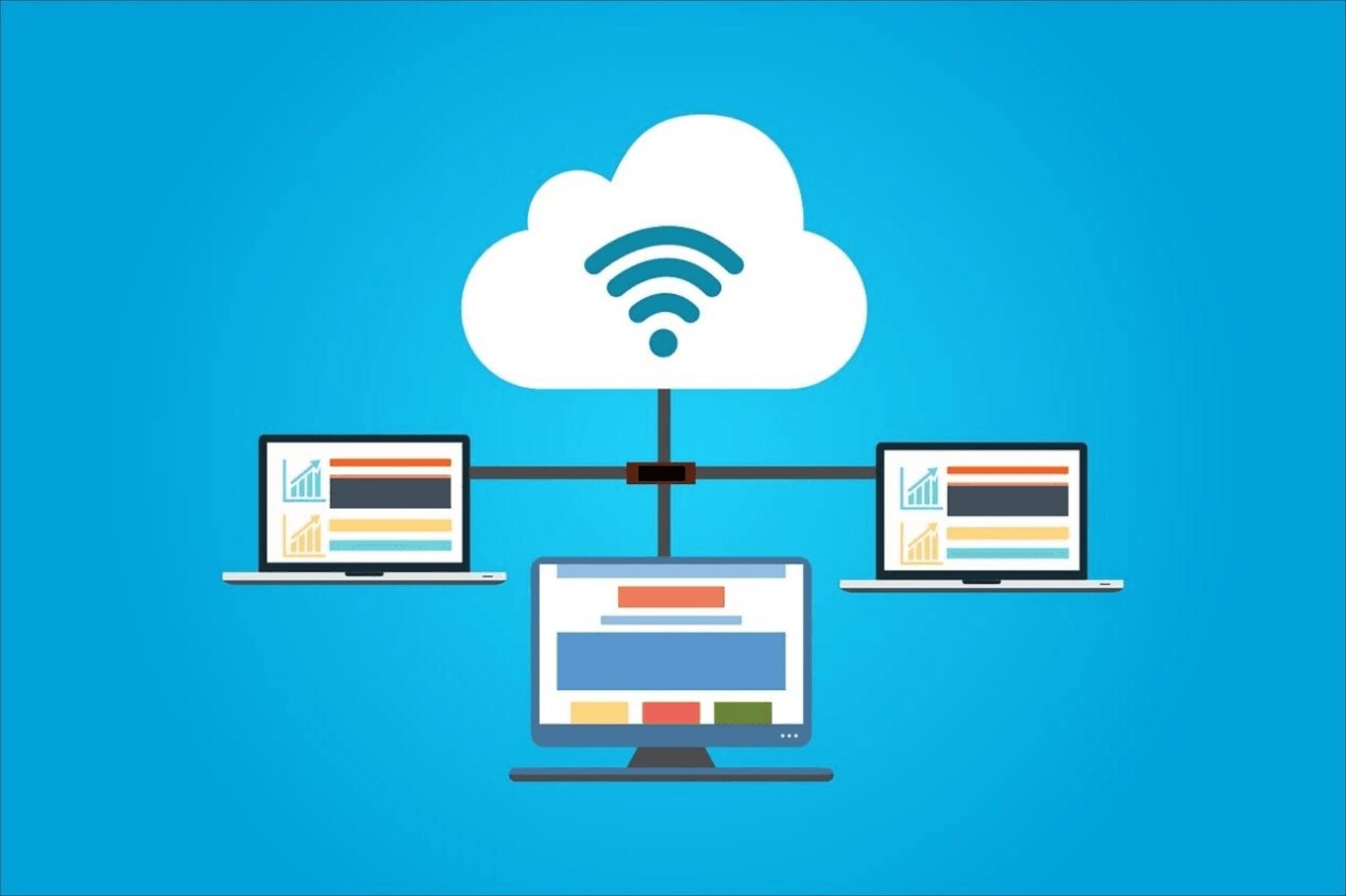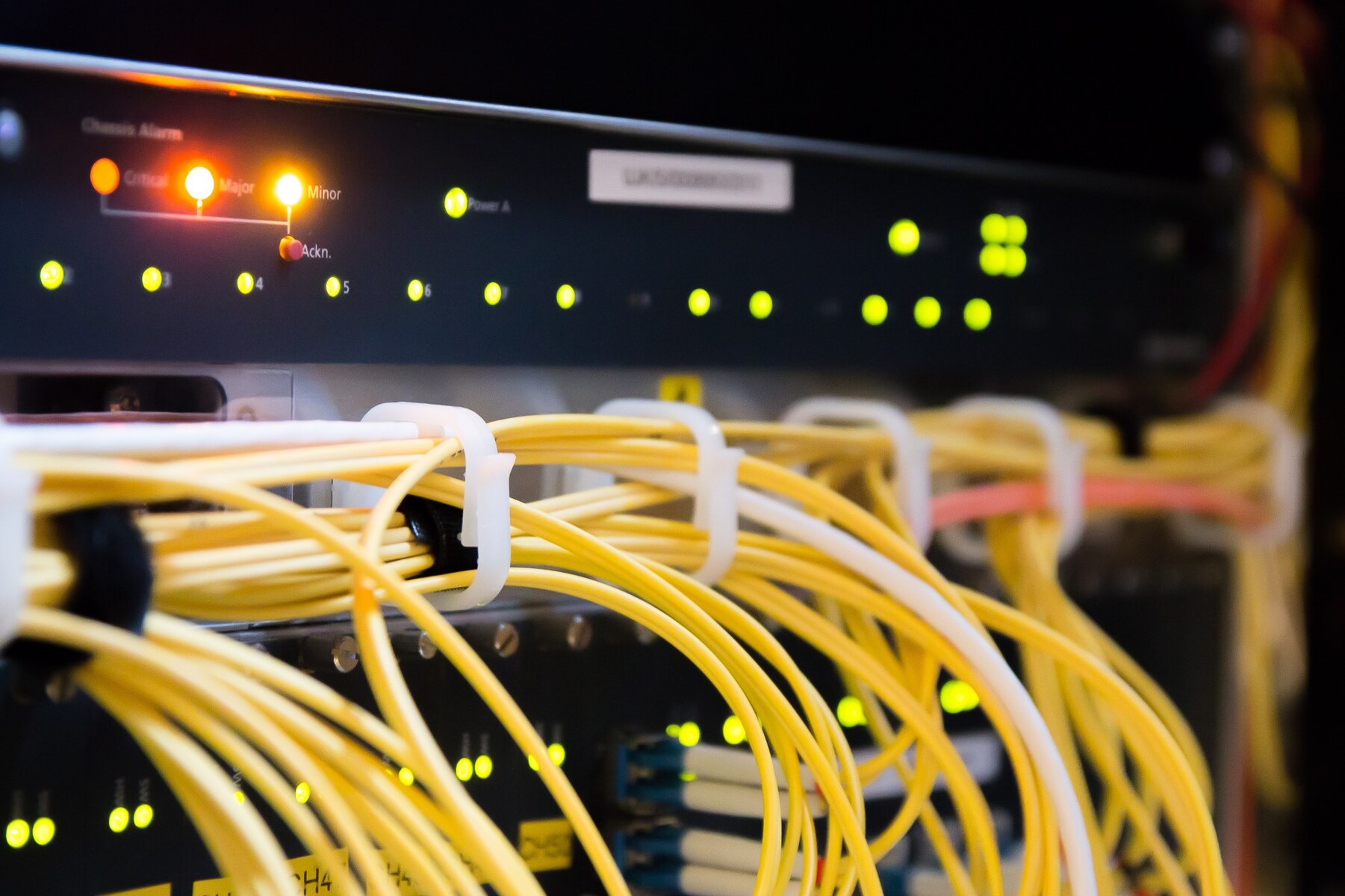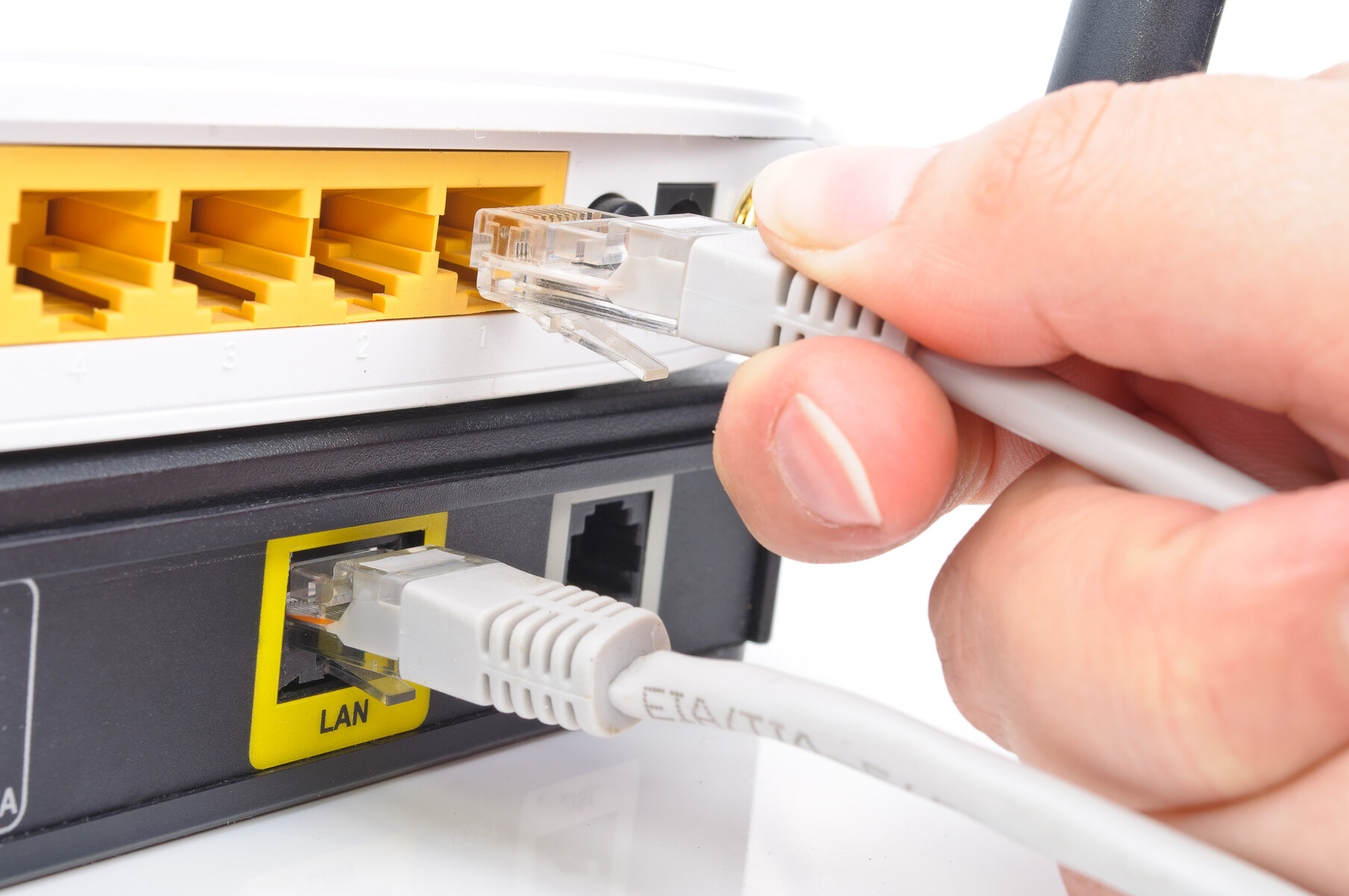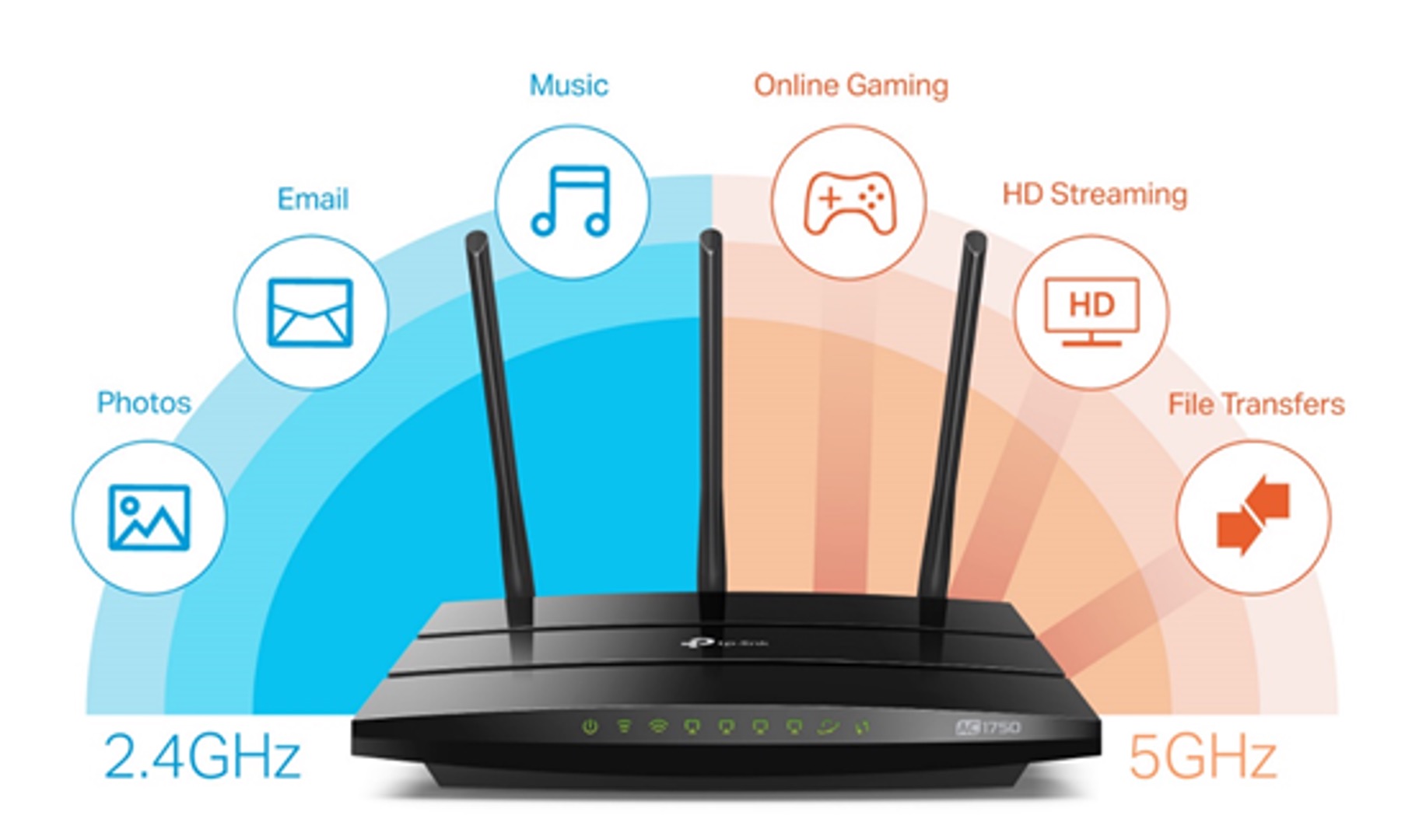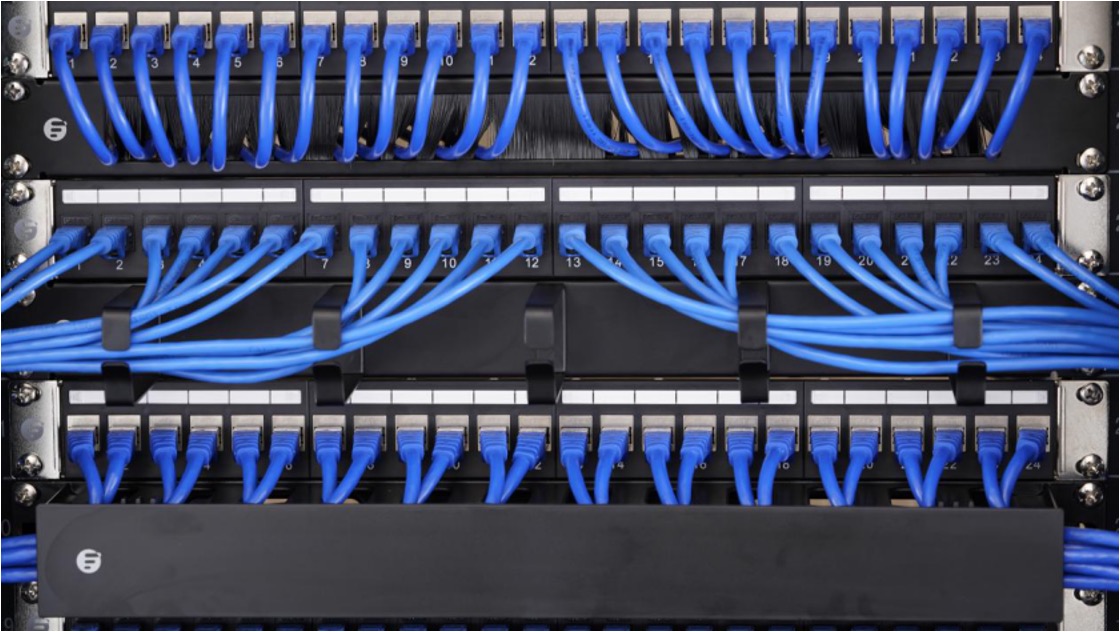Introduction
Configuring a network switch is a fundamental aspect of network management. Whether you are setting up a new network or optimizing an existing one, understanding how to configure a network switch is essential for ensuring efficient data transfer and seamless communication between devices. A network switch acts as a controller, enabling connected devices to share information and resources. This article provides a comprehensive guide to configuring a network switch, covering everything from the basics to advanced settings.
Configuring a network switch involves a series of steps, including preparing for configuration, accessing the switch, and setting up various parameters to meet specific networking requirements. By following this guide, you will gain the knowledge and skills needed to configure a network switch effectively, thereby enhancing the performance and security of your network infrastructure.
Network switches play a pivotal role in directing data traffic within a network. They are responsible for intelligently routing data packets to their intended destinations, ensuring that information is transmitted accurately and efficiently. Whether in a small office, a large enterprise, or a data center, network switches form the backbone of modern networking, enabling devices to communicate with each other and access shared resources.
As technology continues to advance, the demand for high-speed, reliable network connectivity grows. With the proliferation of cloud services, video streaming, and data-intensive applications, the need for robust and well-configured network infrastructure has never been greater. By mastering the art of configuring network switches, you can contribute to the seamless operation of your organization's network, thereby facilitating productivity and collaboration among users.
In the following sections, we will delve into the intricacies of network switch configuration, covering topics such as VLAN configuration, port settings, security measures, and monitoring techniques. Whether you are a seasoned network administrator or a novice IT enthusiast, this guide will equip you with the knowledge and confidence to configure network switches effectively. Let's embark on this journey to unravel the complexities of network switch configuration and empower ourselves with the skills to create resilient and high-performing networks.
Understanding Network Switches
Before delving into the configuration process, it is essential to grasp the fundamental role of network switches in the realm of networking. A network switch is a critical networking device that operates at the data link layer of the OSI model, facilitating the efficient transfer of data between devices within a local area network (LAN). Unlike hubs, which indiscriminately broadcast data to all connected devices, switches intelligently forward data packets only to their intended recipients, thereby optimizing network performance and bandwidth utilization.
Network switches are equipped with multiple ports, each serving as a connection point for devices such as computers, printers, servers, and other networking equipment. These ports enable seamless communication between devices, allowing them to exchange data and access shared resources. Additionally, switches come in various configurations, including unmanaged, managed, and layer 3 switches, each offering distinct features and capabilities tailored to specific networking requirements.
Managed switches provide advanced functionality, allowing administrators to configure and monitor the device, implement security measures, and optimize network traffic. In contrast, unmanaged switches operate with plug-and-play simplicity, making them ideal for basic networking needs without the need for extensive configuration. Layer 3 switches, also known as multilayer switches, incorporate routing capabilities, enabling them to make forwarding decisions based on IP addresses, thereby enhancing network efficiency and scalability.
Understanding the anatomy of a network switch is crucial for effective configuration. Switches utilize MAC addresses to identify connected devices, creating a table that maps MAC addresses to the corresponding switch ports. This process, known as MAC address learning, enables switches to intelligently forward data packets to the appropriate ports, minimizing unnecessary network traffic and enhancing overall performance.
Moreover, network switches play a pivotal role in segmenting networks through the implementation of virtual LANs (VLANs). By logically dividing a single physical network into multiple virtual networks, VLANs enhance security, manageability, and bandwidth utilization within complex network environments. This segmentation enables administrators to isolate and control traffic, optimize network resources, and enhance the overall efficiency of the network.
As we embark on the journey of configuring network switches, it is imperative to appreciate the intricate functions and capabilities of these indispensable networking devices. By understanding the underlying principles of network switches, we can harness their full potential to create robust, secure, and high-performing networks that cater to the evolving demands of modern computing.
Preparing for Configuration
Prior to embarking on the configuration of a network switch, it is imperative to undertake thorough preparation to ensure a smooth and successful setup process. The following steps are essential in preparing for the configuration of a network switch:
- Understanding Network Requirements: Begin by comprehensively assessing the network requirements and objectives. Determine the number of devices to be connected, the anticipated data traffic, and any specific security or performance considerations. This initial assessment forms the foundation for the subsequent configuration steps.
- Choosing the Right Switch: Select a network switch that aligns with the identified network requirements. Consider factors such as port density, speed, and management capabilities. Whether opting for a basic unmanaged switch or a feature-rich managed switch, ensure that the chosen device meets the networking needs and allows for future scalability.
- Gathering Necessary Information: Collect pertinent details, including the switch’s default IP address, login credentials, and any specific configuration guidelines provided by the manufacturer. This information will be instrumental in accessing and configuring the switch effectively.
- Network Topology Planning: Map out the network topology to visualize the physical layout of devices and the interconnections between them. Understanding the network layout aids in determining the placement of the switch and the allocation of ports for various devices and network segments.
- Setting Up a Configuration Environment: Establish a dedicated configuration environment that provides access to the network switch without disrupting the live production network. This may involve setting up a test bench or utilizing a separate network segment for initial configuration and testing.
- Backup and Documentation: Prior to initiating any configuration changes, create a backup of the switch’s current configuration. Additionally, maintain detailed documentation of the existing network setup, including IP addressing schemes, VLAN configurations, and port assignments. This documentation serves as a reference and backup in the event of configuration errors or unforeseen issues.
By meticulously preparing for the configuration process, network administrators and IT professionals can lay a solid groundwork for the successful setup and optimization of network switches. Thorough preparation not only streamlines the configuration process but also minimizes the risk of errors and disruptions to the operational network. With the groundwork laid, we are ready to delve into the intricacies of accessing and configuring a network switch to meet the specific networking requirements.
Accessing the Switch
Before commencing the configuration of a network switch, it is essential to gain access to the device’s management interface. This typically involves connecting to the switch using a console cable or accessing it through a web-based interface. The following steps outline the process of accessing a network switch for configuration:
- Physical Connection: If utilizing a console cable, connect one end to the console port of the switch and the other end to a computer or terminal using a serial port or USB-to-serial adapter. Ensure that the terminal emulation software, such as PuTTY or Tera Term, is installed on the computer to establish a console session with the switch.
- Terminal Emulation: Launch the terminal emulation software and configure the connection settings, including the serial port, baud rate, data bits, stop bits, and parity. These settings must match the console port settings of the switch to establish a successful connection.
- Console Access: Power on the switch and access the terminal emulation software to initiate a console session. Upon successful connection, the switch’s command-line interface (CLI) or initial setup wizard will be accessible, allowing for the entry of configuration commands.
- Web-Based Access: For switches with web-based management interfaces, access the switch by entering its default IP address into a web browser. If the switch has been previously configured with a static IP address, ensure that the computer used for access is on the same subnet to establish connectivity.
- Login Credentials: Upon accessing the switch, log in using the default or previously configured credentials. For security purposes, it is advisable to change the default login credentials and implement strong password policies to safeguard the switch’s management interface.
- Initial Configuration: Upon successful access, perform an initial assessment of the switch’s current configuration and status. This includes verifying the firmware version, checking the switch’s operational status, and ensuring that the device is ready for configuration.
By following these steps, network administrators and IT professionals can establish a secure and reliable connection to the network switch, laying the groundwork for the subsequent configuration tasks. Accessing the switch’s management interface is a critical initial step that sets the stage for implementing specific configurations, optimizing network performance, and enhancing security measures.
With access to the switch secured, we are poised to delve into the intricacies of configuring basic settings, VLAN configurations, port settings, security measures, and monitoring techniques to create a resilient and high-performing network infrastructure.
Configuring Basic Settings
Configuring basic settings on a network switch forms the foundation for establishing a functional and optimized network environment. The following essential parameters and configurations are typically addressed when setting up a network switch:
- Management IP Address: Assigning a unique IP address to the switch enables remote management and accessibility. This IP address serves as the gateway for accessing the switch’s management interface and executing configuration tasks.
- Hostname: Providing a meaningful hostname to the switch facilitates easy identification within the network. Assigning a descriptive hostname enhances network management and simplifies device tracking and troubleshooting.
- Date and Time Settings: Synchronizing the switch’s internal clock with an accurate time source is crucial for network operations, log management, and security protocols. Setting the correct date and time ensures accurate event logging and facilitates coordinated network activities.
- System Logging and Notifications: Configuring system logging parameters enables the switch to record critical events, errors, and warnings. Additionally, setting up email notifications for specific events, such as port status changes or security alerts, ensures proactive monitoring and timely response to network events.
- Default Gateway: Specifying the default gateway allows the switch to communicate with devices on remote networks. This gateway serves as the exit point for traffic destined for external networks, enabling seamless interconnectivity beyond the local network.
- Management Access Control: Implementing access control measures, such as defining authorized management IP addresses or enabling secure management protocols like SSH (Secure Shell) and HTTPS, enhances the security of the switch’s management interface.
- Software Updates: Checking for and applying the latest firmware updates and security patches is crucial for maintaining the switch’s stability, performance, and resilience against potential vulnerabilities and exploits.
By configuring these basic settings, network administrators establish a solid operational framework for the network switch, enabling efficient management, monitoring, and control of network resources. These foundational configurations lay the groundwork for implementing advanced features, optimizing network performance, and fortifying the security posture of the network infrastructure.
With the basic settings in place, we are poised to explore advanced configurations, including VLAN setup, port settings, security measures, and monitoring techniques to further enhance the functionality and security of the network switch.
VLAN Configuration
Virtual Local Area Networks (VLANs) play a pivotal role in network segmentation, security, and traffic management. By logically dividing a single physical network into multiple virtual networks, VLANs enable administrators to enhance network performance, optimize resource utilization, and enforce access control policies. The configuration of VLANs on a network switch involves the following key steps:
- VLAN Creation: Begin by creating the necessary VLANs based on the network’s requirements. Assign a unique VLAN ID and name to each VLAN, ensuring that the naming convention reflects the purpose or function of the VLAN for easy identification.
- Port Assignments: Associate switch ports with the appropriate VLANs to segment network traffic. By assigning specific ports to individual VLANs, administrators can control the flow of data and restrict communication between devices, thereby enhancing network security and isolation.
- Trunk Configuration: Configure trunk ports to carry traffic for multiple VLANs across interconnected switches. Trunk ports facilitate the transportation of VLAN-tagged traffic between switches, enabling the seamless exchange of data for devices in different VLANs.
- Native VLAN Assignment: Specify a native VLAN for trunk ports to handle untagged traffic. The native VLAN serves as the default VLAN for untagged frames received on a trunk port, ensuring compatibility and seamless communication between switches.
- VLAN Routing: Implement inter-VLAN routing to enable communication between devices in different VLANs. This can be achieved through the configuration of a layer 3 switch or a dedicated router to facilitate the routing of traffic between VLANs.
- VLAN Access Control: Enforce access control policies by configuring VLAN access control lists (VACLs) to filter traffic based on VLAN membership. VACLs enable administrators to define granular access control rules to govern the flow of traffic between VLANs, enhancing network security and compliance.
By effectively configuring VLANs, network administrators can create a resilient and efficient network environment that aligns with the organization’s operational and security requirements. VLAN segmentation enhances network performance, mitigates broadcast traffic, and provides a flexible framework for implementing security policies and access controls.
With VLANs configured, we are poised to explore the intricacies of port settings, security measures, and monitoring techniques to further optimize and fortify the network infrastructure.
Port Configuration
Configuring ports on a network switch is a crucial aspect of network management, enabling administrators to optimize connectivity, control traffic flow, and implement specific networking features. The following key considerations and configurations are integral to effective port management:
- Port Speed and Duplex Settings: Adjust the speed and duplex mode of switch ports to match the capabilities of connected devices. Configuring ports for optimal speed and duplex settings ensures efficient data transfer and minimizes network latency.
- Port Security: Implement port security measures, such as MAC address filtering and port lockdown, to restrict unauthorized access and prevent unauthorized devices from connecting to switch ports. Port security features bolster network integrity and mitigate security risks.
- Port Aggregation (EtherChannel): Configure port aggregation to combine multiple switch ports into a single logical link, increasing bandwidth and providing redundancy. EtherChannel enhances network performance and fault tolerance by load balancing traffic across aggregated ports.
- Port Mirroring: Enable port mirroring to replicate network traffic from one port to another designated port for monitoring and analysis purposes. Port mirroring facilitates network troubleshooting, performance monitoring, and security analysis without disrupting normal traffic flow.
- Quality of Service (QoS): Configure QoS parameters on switch ports to prioritize specific types of traffic, ensuring that critical data, such as voice or video streams, receives preferential treatment in terms of bandwidth and latency. QoS optimization enhances network performance and user experience for real-time applications.
- Storm Control: Enable storm control mechanisms to mitigate broadcast, multicast, or unicast storms that can disrupt network operations. Storm control measures prevent excessive traffic from overwhelming switch ports, maintaining network stability and reliability.
By effectively configuring switch ports, network administrators can tailor the network infrastructure to meet specific performance, security, and operational requirements. Port configurations optimize connectivity, mitigate security threats, and facilitate efficient traffic management, thereby contributing to a resilient and high-performing network environment.
With port configurations in place, we are ready to explore the implementation of security measures to fortify the network infrastructure and ensure the integrity of network operations.
Security Settings
Implementing robust security measures on a network switch is paramount to safeguarding sensitive data, protecting against unauthorized access, and fortifying the overall integrity of the network infrastructure. The following security settings and configurations are essential for enhancing network security:
- Authentication Methods: Utilize strong authentication protocols, such as 802.1X, to control network access and authenticate devices connecting to switch ports. 802.1X authentication enhances network security by requiring valid credentials for network access, thereby preventing unauthorized devices from connecting to the network.
- Access Control Lists (ACLs): Configure ACLs to filter traffic based on defined criteria, such as source/destination IP addresses, protocols, and port numbers. ACLs enable administrators to enforce granular access control policies, restrict unauthorized traffic, and mitigate potential security threats.
- Port Security: Enable port security features to limit the number of MAC addresses allowed on switch ports, preventing unauthorized devices from connecting to the network. Port security measures bolster network integrity and mitigate the risks associated with unauthorized access attempts.
- Dynamic ARP Inspection (DAI): Implement DAI to validate ARP packets and prevent ARP spoofing attacks, which can lead to network disruptions and security breaches. DAI safeguards the network against malicious manipulation of ARP traffic, enhancing overall network security.
- Encrypted Management Protocols: Utilize encrypted management protocols, such as SSH (Secure Shell) and HTTPS, to secure remote access to the switch’s management interface. Encrypted management protocols protect sensitive configuration data and credentials from unauthorized interception and tampering.
- Role-Based Access Control (RBAC): Implement RBAC to define and enforce specific privileges and access levels for administrative users. RBAC enhances security by ensuring that users have appropriate permissions and access rights based on their roles within the network management hierarchy.
By implementing these security settings, network administrators can establish a resilient and secure network environment that mitigates potential security risks, safeguards sensitive data, and maintains operational integrity. The proactive deployment of security measures on network switches is essential for protecting against evolving security threats and ensuring the confidentiality, integrity, and availability of network resources.
With security settings in place, we are prepared to explore monitoring and management techniques to proactively oversee and maintain the network infrastructure.
Monitoring and Management
Effective monitoring and management of a network switch are essential for ensuring optimal performance, identifying potential issues, and proactively addressing network challenges. The following monitoring and management techniques are integral to maintaining a resilient and efficient network environment:
- Network Traffic Monitoring: Utilize monitoring tools and features, such as port mirroring and network traffic analysis, to gain insights into network utilization, identify bandwidth-intensive applications, and detect potential anomalies or security threats within the network.
- Performance Metrics and Statistics: Regularly monitor performance metrics, including interface utilization, error rates, and packet discards, to assess network health and identify areas for optimization or troubleshooting. Analyzing performance statistics enables proactive management of network resources and identification of potential bottlenecks.
- Event Logging and Alerts: Configure event logging to record critical network events, errors, and warnings. Additionally, set up alerts and notifications for specific events, such as interface status changes, spanning tree protocol (STP) events, or security-related incidents, to facilitate proactive response and troubleshooting.
- Remote Management and Access: Enable secure remote management of the switch through protocols such as SSH and SNMP (Simple Network Management Protocol). Remote access facilitates centralized management, monitoring, and configuration of network switches, ensuring operational oversight from a centralized management console.
- Firmware and Configuration Backups: Regularly back up switch configurations and firmware to safeguard against data loss and enable rapid recovery in the event of configuration errors or hardware failures. Maintaining up-to-date backups ensures resilience and minimizes downtime during recovery processes.
- Compliance and Security Auditing: Conduct periodic audits to assess network compliance with security policies, industry regulations, and best practices. Security auditing helps identify vulnerabilities, enforce security controls, and ensure adherence to regulatory requirements within the network environment.
By leveraging these monitoring and management techniques, network administrators can proactively oversee and maintain the network infrastructure, identify performance bottlenecks, and respond to potential security threats in a timely manner. Effective monitoring and management practices are integral to sustaining a high-performing, secure, and resilient network environment.
With a comprehensive understanding of monitoring and management techniques, we have explored the intricacies of configuring and maintaining a network switch to meet the evolving demands of modern networking.
Conclusion
Configuring a network switch is a multifaceted endeavor that encompasses essential tasks such as setting up VLANs, managing port configurations, implementing security measures, and proactively monitoring network performance. By following best practices and leveraging advanced features, network administrators can create a resilient, secure, and high-performing network infrastructure that meets the demands of modern computing.
Understanding the intricacies of network switches and their role in directing data traffic within a network is fundamental to effective configuration. By comprehensively preparing for the configuration process and gaining access to the switch’s management interface, administrators lay the groundwork for successful setup and optimization of network switches.
Configuring basic settings, such as assigning management IP addresses, establishing hostnames, and implementing system logging, forms the foundation for efficient network management. Additionally, the configuration of VLANs, port settings, security measures, and monitoring techniques enhances network performance, security, and operational integrity.
As technology continues to evolve, the demand for high-speed, reliable network connectivity grows. By mastering the art of configuring network switches, network administrators can contribute to the seamless operation of their organization’s network, thereby facilitating productivity and collaboration among users.
In conclusion, the effective configuration and management of network switches are essential for maintaining a robust and secure network infrastructure. By adhering to best practices and embracing advanced features, network administrators can ensure the optimal performance, security, and resilience of their networks in the face of evolving technological challenges.







